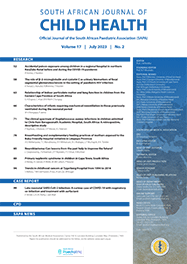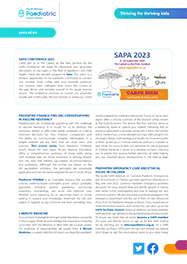Articles

Cranial Ultrasound in Neonates and infants in rural Africa
Abstract
Methods: All cerebral ultrasound scans, performed over a 32-month period at Haydom Lutheran Hospital/Tanzania, were retrospectively analysed. The patients’ presenting signs and symptoms were categorised into nine groups: 1. birth asphyxia, 2. congenital syndromes, 3. neural tube defects/spina bifida, 4. macrocephalus, 5. post-meningitis, 6. seizures, 7. developmental/neuromuscular abnormalities, 8. head trauma, and 9. miscellaneous. The information derived from the scans was then analysed with regard to underlying pathology and possible influence on the child’s future management.
Results: 420 scans were performed in 293 patients. 34 of these were older than one year. In 155 patients, no abnormal results were obtained. When comparing results of the abnormal scans with their impact on patient management, only in groups 1 (45%), 3 (100%), 4 (87%), 5 (57%), 6 (31%) and 7 (45%), the pathological findings provided useful information. Prematurity was almost no indication (n=2) for ultrasound scans.
Conclusions: Cerebral ultrasound is a highly feasible technique even in resource-poor settings and provides valuable additional information in patients with neural tube defects/spina bifida, macrocephalus, post-meningitis, birth asphyxia, developmental/ neuromuscular abnormalities, and seizures.
Authors' affiliations
Carsten Krüger,
Naftali Naman,
Full Text
Keywords
Cite this article
Article History
Date published: 2010-10-05
Article Views
Full text views: 2458

.jpg)



Comments on this article
*Read our policy for posting comments here